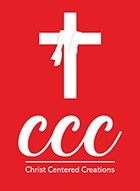Pete
You’re listening to the Bible for Normal People, the only God-ordained podcast on the internet. I’m Pete Enns.
Jared
And I’m Jared Byas.
Intro
[Intro music begins]
Jared
Hey everyone, we’re going to an event called Theology Beer Camp. It’s hosted by previous podcast guest, Tripp Fuller.
Pete
And you’ll get to nerd out if you go with scholars and enjoy some wild live podcasts, which is always a lot of fun. Have some serious fun at a tailgate party, take part in fall festivities, enjoy quality craft beer, and hang with some of your favorite podcasts.
Jared
There is a lot of podcasters and people coming. Some of my excitement though, comes from some of the musical guests like Derek Webb, Dan from Jars of Clay, Trey Pearson. So there’s a lot of folks coming.
Pete
Listen, it’s happening October 19-21 in Springfield, Missouri. And you can get more info and sign up at the website address TheologyBeer.camp.
Jared
And this is really important when you go to TheologyBeer.camp, use the code “B4NPGODPOD” for $25 off your registration. Hope to see you there.
Pete
Hey, folks, on today’s episode, we’re talking about the Talmud with Richard Kalmin. Richard is the professor of Talmud and Rabbinics at the Jewish Theological Seminary where he has taught since 1982. Jared, what were you doing in 1982?
Jared
I was not born yet.
Pete
You were not even on this earth.
Jared
I was not.
Pete
And he was doing serious stuff, man.
Jared
Exactly. That’s impressive.
Pete
That’s very impressive.
Jared
He’s the author of several books and numerous articles on the interpretation of rabbinic stories, ancient Jewish history, and the development of rabbinic literature, which is some of what we talked about today. And his most recent book is titled “Migrating tales: The Talmud’s Narratives and Their Historical Context.” So let’s get into the episode.
Richard
[Episode highlight begins with Richard speaking over music]
“For me, that religious ideal is to have numerous possibilities and that all of these possibilities are authentically Jewish. I love the spirit of free inquiry and unresolved debate. And the fact that for every question, there are four different possibilities. So you’re expanding the degree to which Judaism can be a growing and flourishing tradition, even in the modern world.”
[Ad break]
Jared
Well, Richard, it’s great to have you on the podcast. I’m so excited for this conversation. I’m sure it’s gonna be very interesting.
Richard
Thank you very much for inviting me.
Jared
So the first question is: what is the Talmud? Maybe a brief definition to help us kind of get going and at least situate us in a context here.
Richard
The Talmud is a commentary on the earlier traditions that developed based on the Bible, and based on an earlier rabbinic work called the Mishnah. It consists of everything that the rabbis, the Jewish sages, lived from the first to the roughly seventh century CE, which is the Common Era, otherwise known as AD, in Christian tradition. So everything that they thought about and talked about and lived during that period. And there are two Talmuds actually, one is the Babylonian Talmud, which was produced in the Persian Empire, between the Tigris and Euphrates rivers, in what is modern day Iraq. And the other is the Palestinian Talmud, also called the Yerushalmi, which was produced in the land of Israel, under the Roman Empire between the first and the fourth or fifth century CE.
Pete
That’s very helpful. Richard, would you—just while we’re on this topic—maybe the difference between the Babylonian and the Palestinian Talmud and why would there be a Babylonian Talmud at all?
Richard
Okay, why would there be a Babylonian Talmud at all? Because there was a very major Jewish community in the Persian Empire that formed after the Roman destruction of the Jewish temple in the year 70 CE. And even before that, going back to the destruction of the first temple, in the sixth century BCE—the Jews don’t like to mark their time based on Christ, so that’s why they came up with this other way of doing it BCE and CE, which doesn’t mention Christ.
Pete
Right.
Richard
Okay. Instead, they use the designation of the Common Era, but it amounts to the same thing. But anyway, those two major destructions, the destruction of the First and Second Temple, along with it came the transplanting of an extremely large number of Jews from the land of Israel to first the Babylonian Empire and then the Persian Empire, again in what is modern day Iraq. And if anything, the Babylonian Talmud is larger than the Palestinian Talmud, reflecting the greater prominence of the Babylonian Jewish community at that time than the Palestinian Jewish community
Pete
And Richard, is it also more.. Is the Babylonian Talmud- Ah, I don’t know what the right word to use here is—is it more important, more authoritative, more widely used?
Richard
…Yes. But that is primarily due to the fact that it had two centuries longer to develop than the Palestinian Talmud did. The Palestinian Talmud was formed between the first and the fourth or fifth centuries, whereas the Babylonian Talmud was developed between the first and the sixth or seventh centuries. So it had 200 more years to continue to develop. So it’s larger and more comprehensive and contains more. But really, we have to get used to altering our perspective when we’re talking about the Jewish community in antiquity, because we’re so used from our western point of view to be focused on the western part of the Roman Empire, where the capital was Rome in Italy. The Persian Empire was equally prominent, and as far as the Jews were concerned, was more important than the Roman Empire.
Pete
Okay. Again, while we’re on the topic here, earlier you mentioned that the Talmud has roots in the biblical tradition and then also, you mentioned the Mishnah. So could you just briefly explain what is the Mishnah? And what is the relationship between the Mishnah and the Talmud? Because that always gets confusing.
Richard
Yes, the Mishnah is a record primarily of laws that developed on a wide variety of topics that the rabbis thought were important, and this developed in the Roman Empire as part of the literature of the Jews that developed under Rome in Israel. But the Talmud then split off into two parts, one continued in the land of Israel, that’s the Palestinian Talmud, or the Yerushalmi, and the other one developed to the east, in the Persian Empire.
Pete
So did the Mishnah grow into the Talmud? I’m still not clear about the relationship between the two, or does the Talmud contain the Mishnah? Or-
Richard
Yes, the Talmud contains the Mishnah.
Pete
Okay.
Richard
And it’s very different from the Mishnah, in that the Mishnah, as I said, is primarily law. It’s what the rabbis, the Jewish sages of the second and early third centuries thought was important both societally and religiously. The Talmud takes off from there, both Talmuds do. And so the Babylonian Talmud, for example, which developed in the land of Persia, forms a vast commentary on the Mishnah.
Pete
Oh, okay. So it’s a commentary on the Mishnah?
Richard
On the Mishnah, right.
Pete
Is it sort of like keeping the dialogue going? Or something, or…?
Richard
Yes, but as I said, the Mishnah is primarily laws so there’s not too much dialogue in the Mishnah, there are differences of opinion constantly, okay? But there is not too much back and forth between the different rabbis, the different sages, that are quoted in the Mishnah. But when you get to the Talmuds, there’s constant dialogue between them. And that becomes the most characteristic form of discourse in the Talmud. Objections, responses, questions, answers, and really, the point of the Talmud seems to be to develop people’s ability to think. To puzzle things out, and really, almost to avoid coming to conclusions. Okay? So the preference is that when you get to the Talmuds, is that both opinions that are featured in the earlier sources, such as the Mishnah, end up having something to base themselves on, so that they don’t become refuted. Okay? And so it’s extremely important to the Talmud to keep these different opinions alive, and keep them relevant.
Jared
Why did the Talmud originate? Like, why was it important to write these things down and keep a record of them? And on the flip side of that, why did it stop? Like you mentioned, the Palestinian Talmud goes to the fourth, fifth century, the Babylonian Talmud goes to a little later, sixth or seventh century? Why would it just stop at those times and not continue?
Richard
Well those are very good questions. It seems to have stopped because the need developed to comment on the commentary. So the Babylonian Talmud was getting so big, so huge, and the Palestinian Talmud, even though it wasn’t as big as the Babylonian Talmud was also very sizable. People who lived in what was no longer antiquity, this was the beginning of the developments of the Middle Ages, they needed help in understanding the more ancient sources. So these ancient sources were collected—and this really happened over a long period of time—each generation collected the achievements of the previous generation, but there probably wasn’t a single event that took place that caused it to stop. It’s probably the need to collect and interpret that led to different kinds of literature forming.
And that different kind of literature is the development of what’s known as Geonic commentary in the early Middle Ages, both in Israel and in Babylonia. And that began to put the discussions of the Talmud into practice, okay? Because you read the Talmud, and it’s typically not at all clear what you’re supposed to do. Okay? It’s clear what the parameters are of rabbinic law, okay, that both this and its opposite, both of them are legitimate Jewish options. But what do we do? That’s not at all clear. And so with the Geonim began the process of putting the Talmudic literature into practical form.
Ad Break
[Ad break]
Pete
Yeah, you know, it just strikes me how—I may be wrong in phrasing it this way, Richard, and by all means, please correct me—but the Talmud is like a codification of a discussion or debate and as you put it so well, it’s about thinking. [Huffs] You know, and learning how to think through difficult problems. And I’m saying this for the benefit of some of our listeners, who are, many of whom are Christian and who’ve been raised that, you know, the answer to all of life’s problems are simply in the biblical text itself. And what I’ve appreciated about the Jewish tradition is the overt engagement with tradition, which is itself developing, and it’s not always about finding the right answer, but maybe being wise and trying to understand situations and apply the tradition to new times and places. So I find that to be a very valuable lesson for at least Christians that I know, to sort of internalize a bit.
Richard
I think that’s a good point. I would just slightly modify your definition of the Talmud as a “codification” because codification to me implies that’s already the stage of deciding what to do.
Pete
Ah.
Richard
As I said, if you look just in the Talmud, you’re not going to have any idea of what to do, because both one opinion and its opposite are upheld as valid options. And it’s only when you get to the Geonim, and later the Rishonim, okay, and then Acharonim —I’ll define those terms later on—that you get decisions about what to do based on the competing opinions in the Talmud. The Talmuds are a record of what constitutes Jewish tradition. It collects the full gamut of what is valid Jewishly. But the decision as to what to do, that seems to be left to the individual. And it’s not until the post-Talmudic times that decisions start to be made about well, okay, so how do we take all these opinions and put them into practice?
Jared
That’s really helpful. So it collects the tradition but doesn’t prescribe any behavior?
Richard
Right.
Jared
I’m curious, then, how does the Talmud function in modern Judaism? How is it used?
Richard
Yeah, no, that’s an excellent question. There are different denominations of Judaism. There’s the Orthodox, there’s conservative, there’s reformed, and other smaller denominations of Judaism, there are even non-denominational traditions within modern Judaism. And the Orthodox sees the Talmud as the basis for modern Jewish life. So, nowadays, within orthodoxy, it tends to be very difficult to do things other than what are specified in the Talmud. So—
Pete
Can I kind of ask here, when you say “specified in the Talmud…”
Richard
Yes.
Pete
Even though that is a more dialogical objection and response kind of text, does orthodoxy downplay or ignore, like Geonic interpretation and the other interpretations that you mentioned, which tries to put more of a fine point on what actually to do?
Richard
Yes, that’s true. I actually come from a belief in the conservative position. So I’ll explain what that means in a second. So you have to realize that I have my prejudices.
Pete
Oh, don’t we all.
Richard
And so if somebody were to speak to you from an orthodox perspective, they would have a much different characterization of it than I do. But I find that orthodoxy does not do justice to what I consider to be the true heroes in our tradition, which is the personalities in the Talmud. I love the spirit of free inquiry and unresolved debate and the fact that for every question, there are four different possibilities. That’s what I prize so much. The heroes for me, are the rabbis of the Talmud. The heroes for the Orthodox, I find, are more both the Geonim, who made decisions, and the Poskim who came after the Geonim. And posek means the decisors. Okay, they made decisions. So they took the Talmud, and in my opinion, they did violence to the text in using it as a blueprint for Jewish life. Okay? In other words to say, “Well, based on this time of discussion, we know already within the Talmud, what the Talmud thinks is authoritative.” I think that that approach is totally wrong. As I said, somebody who is coming from an orthodox point of view would totally disagree with me.
Jared
So then maybe can you keep speaking on that, then from the conservative viewpoint, what’s the function of the Talmud? Because what I’m hearing you say is from the Orthodox, it is the groundswell out of which these later interpreters came to their conclusions and then they sort of read that back into the Talmud and now they have a codified way of life that is spelled out for them in this blueprint way. But the conservative would respect the indeterminacy of the Talmud. And so how then does it function in the religious life of a conservative community?
Richard
Again, this is my own opinion, and there are plenty even within the conservative movement that would disagree with me on that. And they use the Talmud in a different way than the Orthodox, to draw conclusions. But I don’t want to make a good case for them because I disagree with them. [Chuckles]
Pete & Jared
[Pete and Jared Laugh] I appreciate your honesty.
Richard
So I think that for me, the religious ideal is to have numerous possibilities. And all of these possibilities are authentically Jewish. And even what we can do is through interpretation, different ways of interpreting the Talmud, which have been developed over the past especially one hundred years, we can come up with new interpretations of what the Talmud is trying to tell us. So we thought, for all of these hundreds and hundreds of years, that the Talmuds’ possibilities were X, Y, and Z, but once we learn to read the text correctly, we realize I’m saying that, no, they’re also A, B, and C. And those are also legitimate Jewish alternatives.
Pete
[Hums in agreement]
Richard
So, you’re expanding the degree to which Judaism can be a growing and flourishing tradition, even in the modern world.
Pete
It hasn’t been lost, I’m sure, on many of our listeners when you talk about using the tradition as a blueprint—I think you used the word blueprint. And I know for many Christians, that there’s an analogous situation of looking to, let’s say, the New Testament period as an unalterable blueprint for answering every question we might have today. And that’s the tension, right? in Christianity between, you know, you have fundamentalism and evangelicalism, which are similar but not the same thing, and then you have more progressive Christians or liberal Christians, and I find it just fascinating that some of the same dynamics appear in Judaism as well.
Could you flesh it out a little bit, because we have, I guess, maybe going in order of like orthodoxy to liberalism, you have orthodoxy and then you have conservative, which is more open, I guess? And then what what other main facets or aspects of Judaism can we talk about that might even have yet different approaches to tradition into the Talmud?
Richard
Well, there’s also Reform Judaism. And by the way, those three major denominations of Judaism, it’s not like the orthodoxy—that Orthodoxy comes first and Conservatism comes second and Reform comes third. It’s actually the opposite. Reform precedes everything. Reform started in the mid-1800s and there was a desire to rid Judaism of its antiquated elements, because it was seen as an ancient tradition that was no longer particularly relevant.
Richard
Well, with Darwin and all…
Richard
Yeah, yeah.
Pete
And other things, right. I guess they started thinking about some things differently.
Richard
Right, yes, exactly. So Reform came first, then Orthodoxy is a reaction to Reform, okay, to say, “No, you can’t do that. You can’t totally change a tradition that is that old.” So Orthodoxy was a reaction to Reform. And I would say it’s a reaction to…an overreaction to Reform by insisting that Judaism had always basically been the same way, and it couldn’t change. Okay, now that’s a caricature of Orthodoxy. And in fact, there’s a lot more room for movement and growth in Orthodoxy, as well as in the other denominations. So Conservativism grew out of Orthodoxy as a way to say, “No, we don’t have to be that extreme in reacting against Reform.” Is that clear?
Pete
Oh, yeah, that’s very clear.
Jared
Pete and I are nodding our heads because the—
Pete
It parallels our lives.
Jared
—Protestant trajectory…
Pete
[Laughs]
Jared
—Protestant trajectory in the 20th century…
Pete
Yeah.
Jared
—especially in America follows a very similar trajectory.
Pete
Even at the same time, you know.
Jared
Right.
Pete
You know, because you have fundamentalism reacting to iterations of Christianity that are dealing with—
Jared
Kind of responded to evolution and all these other things.
Pete
Exactly, all that stuff. And then you have the evangelicals who…
Jared
Who react.
Pete
Who were like, “Let’s not be crazy here,” and the hyper, you know, repristination of everything. And so it seems like—again, not to put anyone in a box, Richard—but Conservative…There seem to be some loose parallels between that and evangelicalism, even though I wouldn’t wish that on anybody. But it seems to be there are some parallels there.
Ad Break
[Ad break]
Jared
Can you say a little bit more about the structure of the Talmud? And if someone were to pick up a Talmud and start flipping through it, what would they find?
Richard
Okay. First, they would find the Mishnah. The whole Mishnah is quoted in the Talmud, and also bits and pieces of the Mishnah, you know, like a sentence here and a sentence there, the part that becomes the focus for discussion in the Talmud, that’s also quoted. And you also have in the Talmud quotations from the Bible. So the Talmud is not only a commentary on the Mishnah and other early contemporary sources—I mean, contemporary to the Mishnah—it’s also a commentary on the Bible, okay? Verse by verse. And that kind of literature is called Midrash. Okay, from the word darash which means to explicate. And the thing that has been explicated there is the Torah, the Bible, okay. And in addition, you have lots of other kinds of traditions, such as stories about the rabbis, the sages, who are called Chachamim in Hebrew, which literally means “the wise ones” or the “wise guys.”
Pete
[Chuckles]
Richard
You can put that as a quotation, which is not totally accurate, the wise ones. And it’s particularly these sage stories that I love to interpret, because very often they have values that are just totally wild, and particularly these developed in the Babylonian Talmud. And there was something going on in Iraq in the fourth to sixth centuries, that really led to the development of this outrageous creative literature—agadic, it’s called—that I haven’t been able to find a parallel to in any other literature in the world. It’s just some amazing stuff. Nowadays, a lot of modern scholarship is devoted to interpreting these sage stories just because they’re totally untapped or have been a totally untapped resource. And when you’re talking about expanding what is legitimate, within Judaism, that is an extremely fertile vein to explore.
Pete
Can we unpack a little bit more just what’s in the Talmud and the structure of it?
Richard
Mhmm.
Pete
It is a multi-volume work, right?
Richard
Yes.
Pete
And how is it divided?
Richard
It’s divided according to chapters of the Mishnah, okay? So you start off with the first tractate, they call it, is tractate on Berakhot, “blessings,” and basically, that is a collection of laws, some stories as well, but mostly laws, about how a person should go through their day and to make use of the things that God has given us in this world via blessings. Okay? So the basic blessing formula is “Baruch atah Adonai, Eloheinu melech ha-olam,” and then it continues on like that. Okay, “Blessed are you God, creator of the world, who has created the fruit of the tree,” for example. So for virtually every phenomenon in the world, there’s a different blessing. So when you see a rainbow, for example, you’re supposed to make a blessing. When you eat the fruit of the vine, a grape, or wine, when you drink wine, you’re supposed to make a different kind of blessing. So that’s what the basic building blocks of the Talmud on tractate Berakhot is okay? Then there are nine chapters in Berakhot in the Mishnah and so there are similarly nine chapters in the Talmud on Berakhot.
Pete
How many tractates are there? A lot?
Richard
Yes, upwards of 40.
Pete
Okay.
Jared
Okay, and each one of those would have a certain number of chapters that are reflected—
Richard
Yes.
Pete
Okay.
Richard
Okay, then there’s, after Berakhot, the next tractates are all in the order of Zeraim, which is their agricultural laws. And this was particularly important in the ancient Jewish society, when people were living in the land of Israel, because that’s where the laws that are specified in the Bible that have to do with like giving charity, for example, giving the corners of your field to the poor, or giving a portion of your crop to the poor, or to the priest. Okay? That makes up the rest of the order, it’s called the “Seder of Zeraim”.
And after Zeraim, you get the order of Nashim, of women. And one thing you have to realize about the ancient rabbis is that they were very androcentric—meaning for them, the norm was male. Okay? So female was considered extraordinary, and therefore they needed to have a way to deal with it religiously, okay?
Then after that—well actually before Nashim came Moed, which is the different holidays that are mentioned in the Bible. There’s Rosh Hashanah, the beginning of the new year. There is Yom Kippur, the Day of Atonement. Of the Sukkot, the holiday of Succoth. And all the other practices that revolve around appointed times. Moed means “appointed time.”
So there’s another tractate in there that’s called Ta’anit, which means fasting. So an extremely important part of daily life in ancient Israel was the need for rain because—and this is true, even in modernity—that there’s not a lot of rain in Israel. So it has to be extremely important for people, for Jews, to be able to do what they can to help it along religiously, in the many instances in which there’s drought, okay? It’s not as important in the land of Babylonia, because the Persians had this tremendous system of irrigation. It’s not like Iraq today, which is extremely dry as well. But back then, it was extremely fertile because the Persians were expert at making canals and bringing water to everybody.
So after that, there’s another order of the Mishnah called Nezikin which has to do with civil law. Okay, both the court system and the administration of punishments and torts. So for example, there’s Bava Kamma, Bava Metzia, Baba Batra. Those are known as the Bavot, three orders in which there is a detailed collection of laws that deal with what happens when a person hits another, causes damage to another, okay? How do you deal with that? And then, as usual, there’s more than one possibility.
Pete
It’s a fairly comprehensive, in other words, view of life.
Richard
Yes.
Pete
And addressing not everything, but a lot of things that can be used as a basis for wise deliberation on things that come up. I’m just, is there a—this is a very Christian question to ask, like—what’s your favorite book of the Bible? Is there a part of the Talmud that you return to, that you get a lot out of, something there that you find life-giving?
Richard
Well, you’re right, it’s a difficult question to answer. I think my personal favorite is tractate Sanhedrin, which is the collection of laws about the court system. But in particular, there are a lot of very wonderful stories about the Jews interacting with Christians actually. And with them interacting with Persians, with pagans. And the stories about Jewish interactions with Christians are very interesting, because they are so unexpected in many ways. For many years, the thinking was that there wasn’t much about Christianity in the Talmuds, especially the Babylonian Talmud, because the thinking was—incorrectly as it turned out—but the thinking used to be that there weren’t many Christians in that part of the world where the Babylonian rabbis were. But as it turned out, there are many Christians in Mesopotamia, that’s where the Jews were located, and Christians who studied the Christians of that part of the world knew about their Christians, but they didn’t know that there was much going on with the Jews. So recently, like in the past, particularly in the past 40 years or so, the scholars of Christianity in Mesopotamia and Judaism and Mesopotamia, have really started to talk to each other. And there’s a whole vast field that’s opening up for cooperation between the two groups.
Jared
I wanted to sneak in one more question about the bigger picture here, because as we’ve been talking this whole time, I keep wanting to put my own framework within my own religious tradition on this. And so I think I don’t have a category for the broader perspective of; how does the Talmud fit—and Pete used the word earlier “authoritative—within, if you were to go to synagogue today, how is the Talmud different authoritatively than, say, the Hebrew Bible text itself? Or say, other rabbis like, you know, Maimonides or other parts of Jewish tradition, how does authority come from texts within Judaism, maybe particularly in the Conservative denomination? Because I’m trying to figure out using my own categories of kind of Christian tradition and texts, and I don’t want to superimpose that.
Richard
Right. Well, in the modern synagogue service, there’s a reading from the Hebrew Bible every Saturday, okay, every Shabbat. And they read from the Torah scrolls, which is housed in an ark and which is a pretty elaborate ceremony of taking it out of the ark and bringing it around to all the people. And then it’s put on the shulchan, the reading table, and then there are people reading directly from the scroll. People in the congregation have translations usually in their hands and for them, but for the modern Western Jew, a lot of what is said in the Bible would seem very strange, very foreign. So then the rabbi gives a talk, the sermon, and what he or she says mostly is taking off from what’s in the Bible, but incorporating mostly traditions from the rabbis, okay.
And they would also choose those traditions which are heavily Midrashic. That’s what the tendency is, because those are the ones that speak to a modern Western audience, without the greatest need for translation. And so if someone is not going to become a scholar, that’s probably the extent to which they received an education in these ancient traditions. The question often is, how much of what the rabbi—and it’s usually a rabbi—is incorporating within his or her sermon is faithful to the original ancient texts? Okay, I might get into trouble with this. But I think a lot of what rabbis do is cut corners, they expurgate the tradition, and make it more comfortable for a modern Western audience, rather than ask the congregation to really confront what the tradition is and says, and perhaps be challenged by it.
Pete
Yeah. I mean, what I’m hearing is that the relationship is complicated and there are different ways of interpreting the accessing the tradition and bringing it into our current moment. And that seems, that’s a great point to end on, I think, because that’s such a common thing that Christians also, in very different ways, in different texts, but in principle they deal with very similar things. So, thank you, Richard, for being on with us! This was really an education for us and we were just delighted to have you on and thank you for taking the time.
Richard
Well, thank you very much for inviting me. I really enjoyed this.
Outro
[Outro music plays]
Jared
Well, thanks to everyone who supports the show. If you want to support what we do, there are three ways you can do it. One, if you just want to give a little money, go to TheBibleForNormalPeople.com/give.
Pete
And if you want to support us and want a community, classes, and other great resources, go to TheBibleForNormalPeople.com/join.
Jared
And lastly, it always goes a long way if you just wanted to rate the podcast, leave a review, and tell others about our show. In addition, you can let us know what you thought about the episode by emailing us at info@TheBibleForNormalPeople.com
Outro
You’ve just made it through another episode of The Bible for Normal People! Don’t forget you can also catch the latest episode of our other show, Faith for Normal People, wherever you get your podcasts. This episode was brought to you by the Bible for Normal People team: Brittany Prescott, Stephen Henning, Wesley Duckworth, Savannah Locke, Tessa Stultz, Danny Wong, Natalie Weyand, Jessica Shao, and Lauren O’Connell.
[Outro music ends]

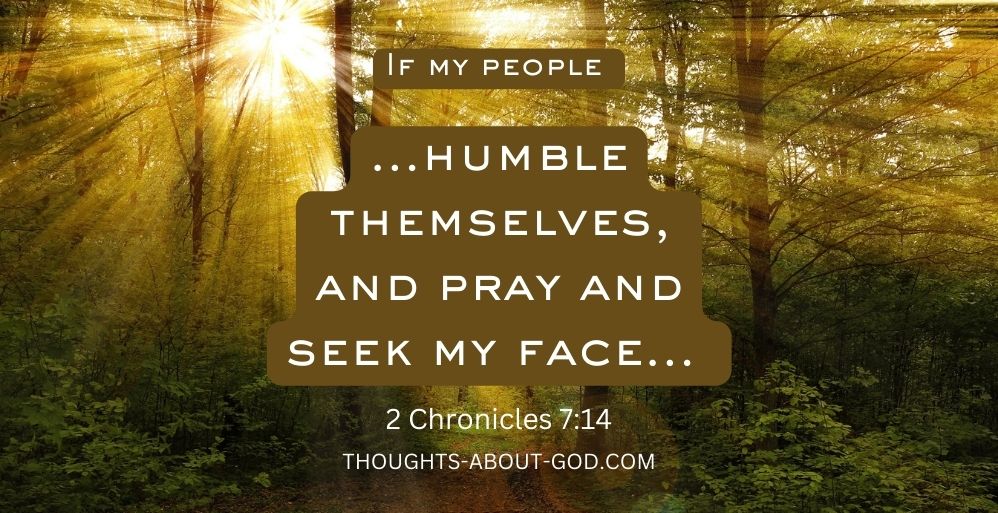



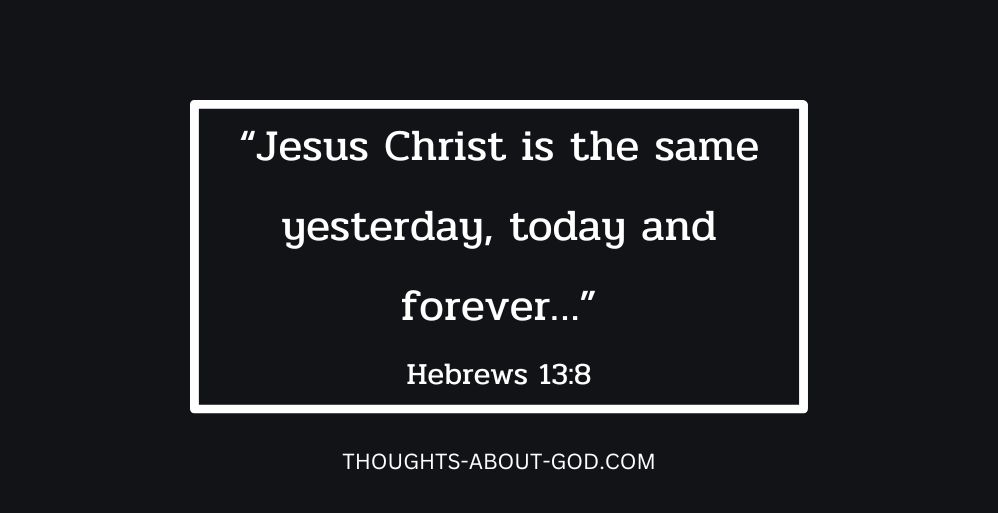


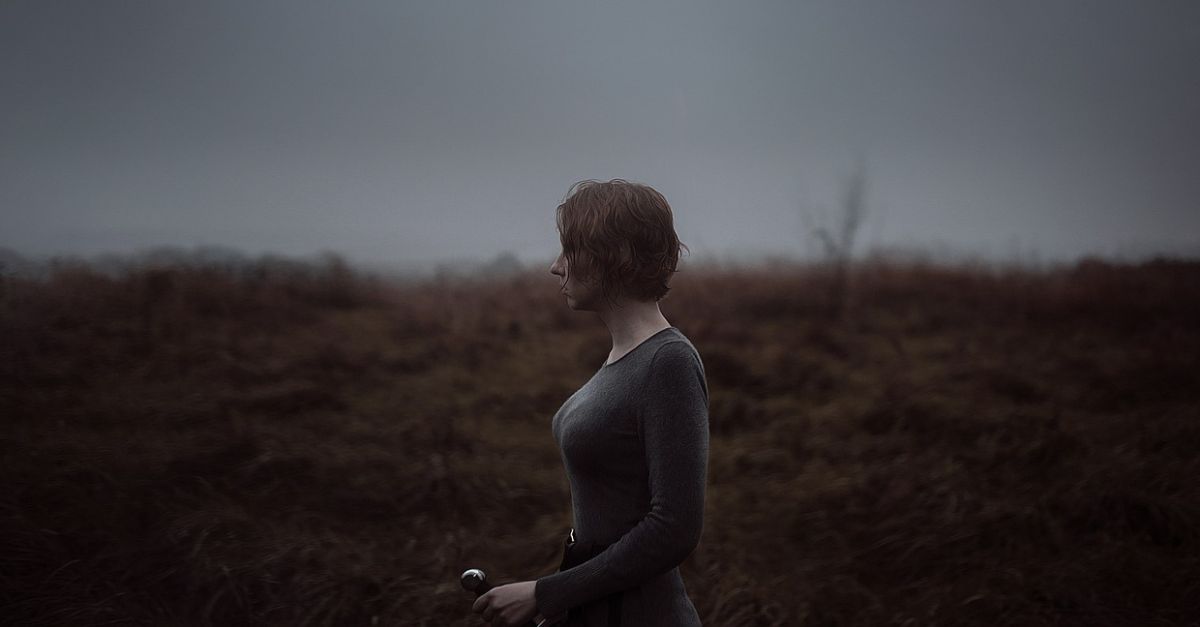
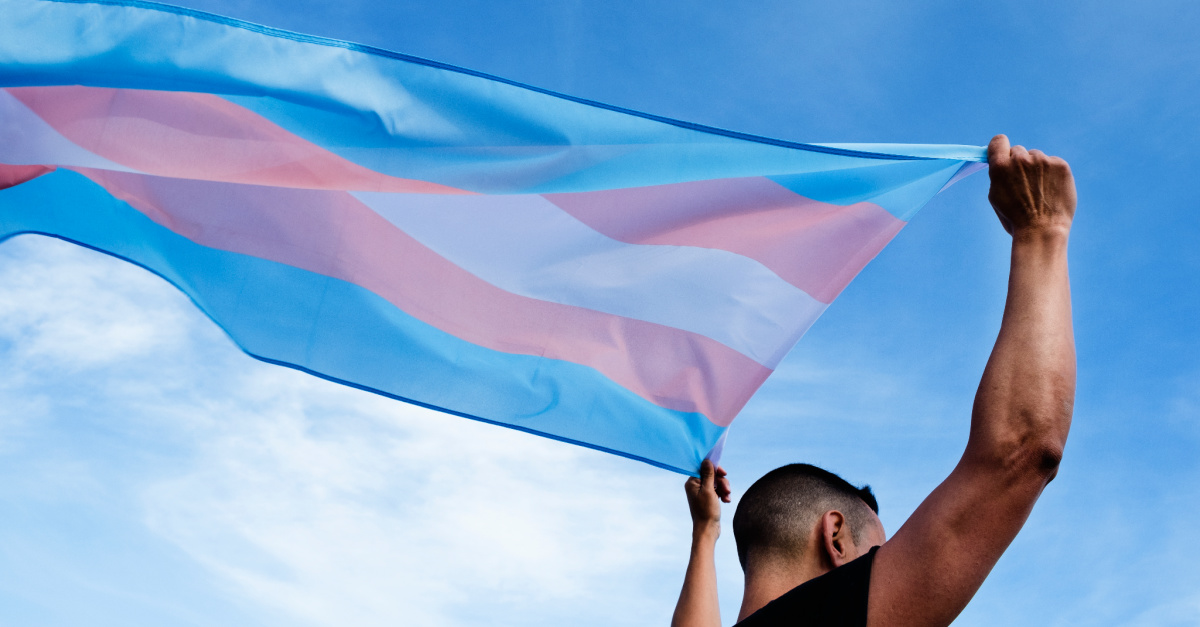









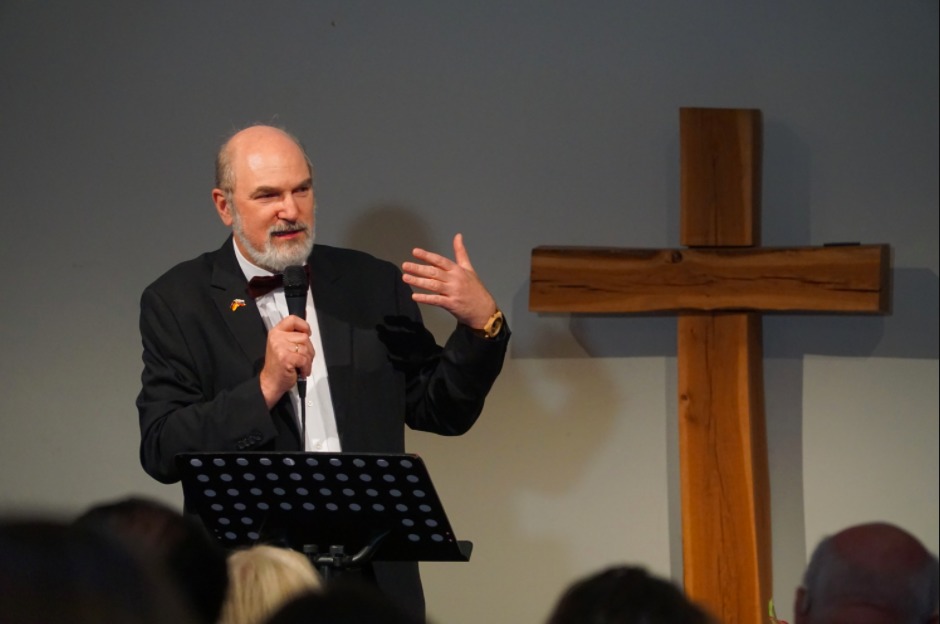

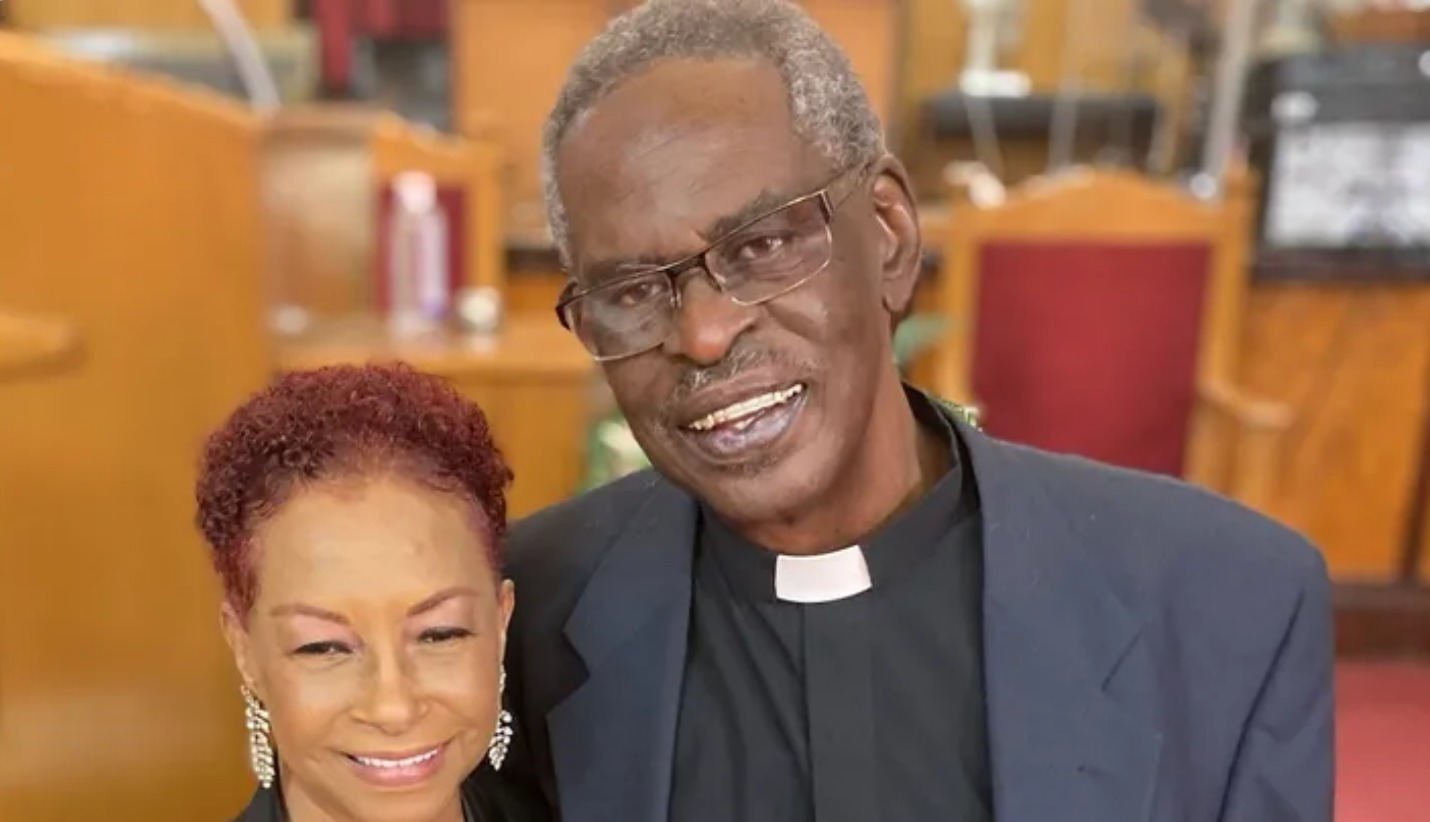
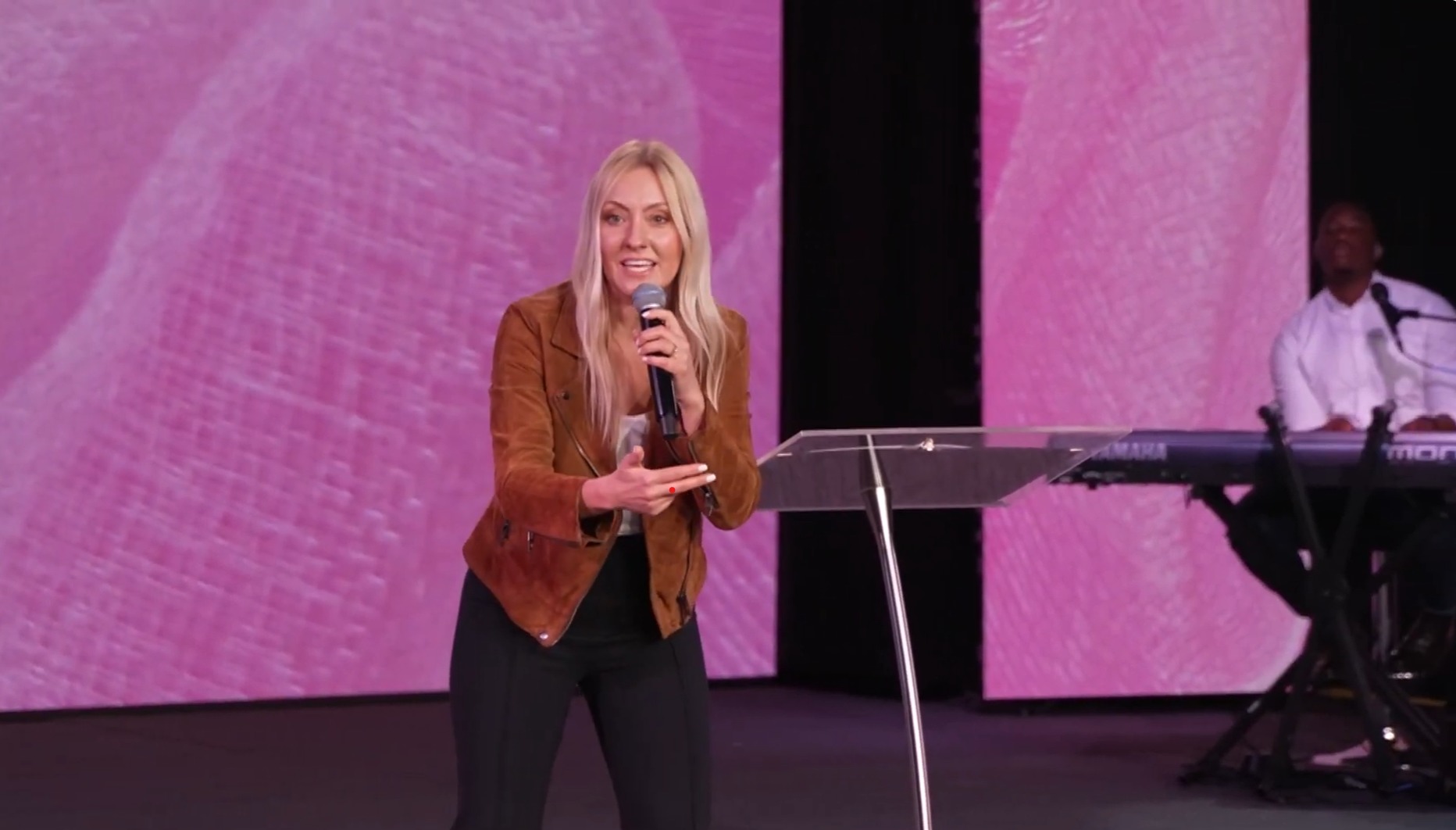





![[Video] More – Aghogho » GospelHotspot](https://gospelhotspot.net/wp-content/uploads/2024/04/More-Aghogho.jpeg)
















